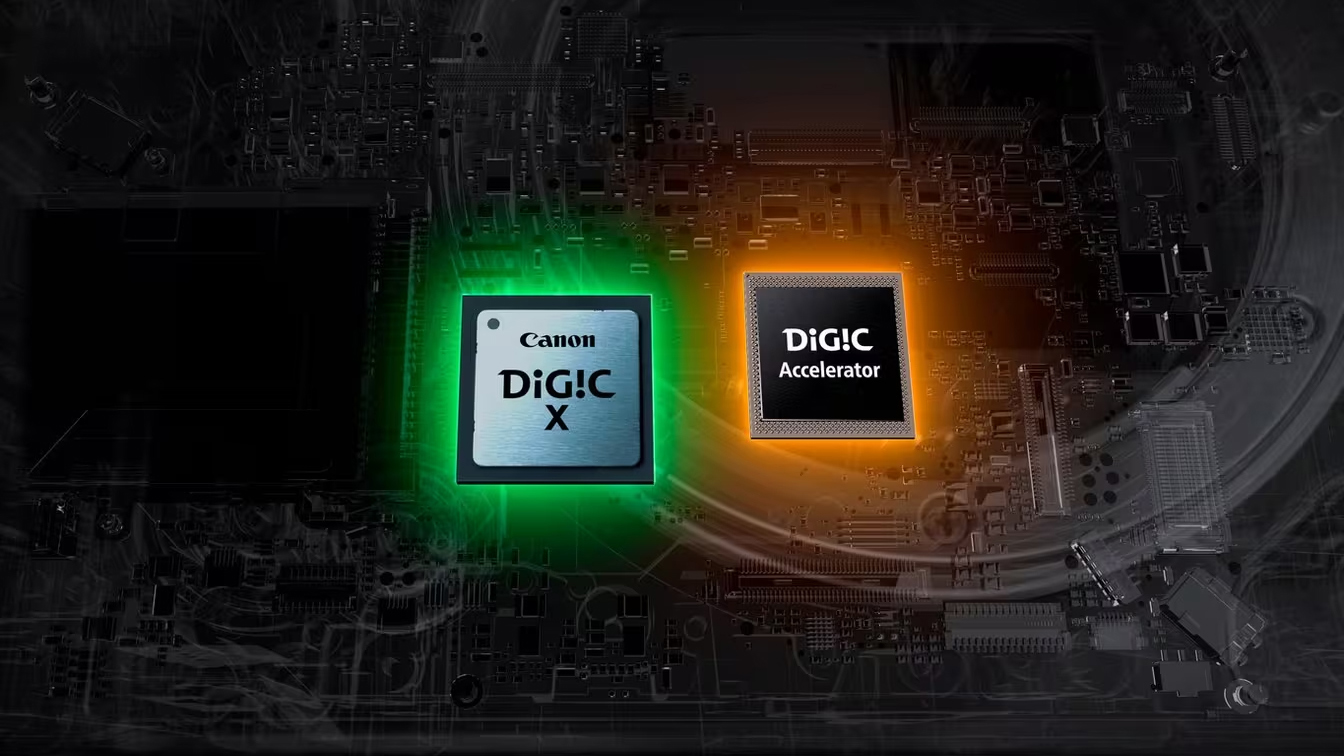The Vivo X200 Ultra's Zeiss teleconverter is no gimmick! Here's why it's staying in my kit bag
Okay… if this add-on teleconverter lens IS a gimmick, it's a darned good one!
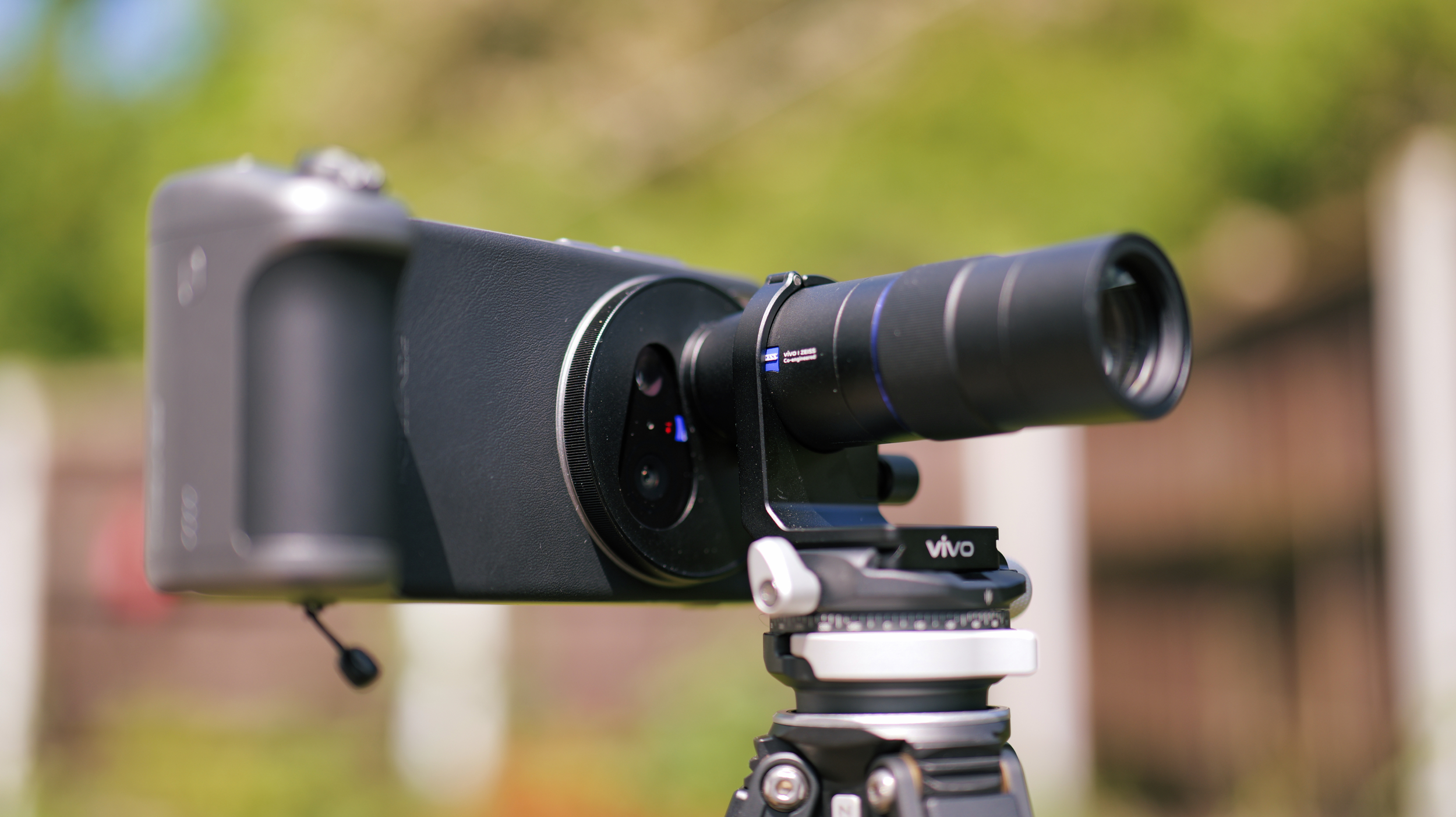
About a decade ago, when even the best camera phones typically only came with a single camera on the rear, I used to carry around a clip-on wide-angle adapter. While it certainly degraded the image quality somewhat, it gave me the added versatility that I craved.
A few years later, ultra-wides started appearing on more and more phones – and it wasn't long before my little clip-on lens adapter felt like a relic of the past.
Of course, these adapters went in the other direction, too. Before smartphone telephoto cameras became the norm, clip-on teleconverters were more abundant. I was never as convinced by these; while they worked, the image quality left a lot to be desired – and stabilization was often a nightmare.
Vivo's new teleconverter
Skipping forward to the present day, Vivo has just launched its latest flagship phone in China, the Vivo X200 Ultra. Along with it, there's an optional Photography Kit, which comes with an ergonomic grip and a 2.35x teleconverter lens, made in collaboration with Zeiss.
I was immediately intrigued but, having used similar teleconverters in the past, my expectations were on the ground. There were a couple of things that gave a glimmer of hope, though.
The first is that the teleconverter is designed to work with Vivo's incredible 85mm equivalent 200MP telephoto camera. If any sensor can make the most of external optics, it's this one.
The second is that it's made in partnership with Zeiss. We all know that Zeiss makes outstanding glass, so surely this is a cut above your average teleconverter.
The best camera deals, reviews, product advice, and unmissable photography news, direct to your inbox!
When I first took the lens out of the packaging, I was immediately impressed. It's got some real heft to it, it's made entirely from metal and glass, and it looks as though it belongs on top of a rifle rather than attached to a smartphone.
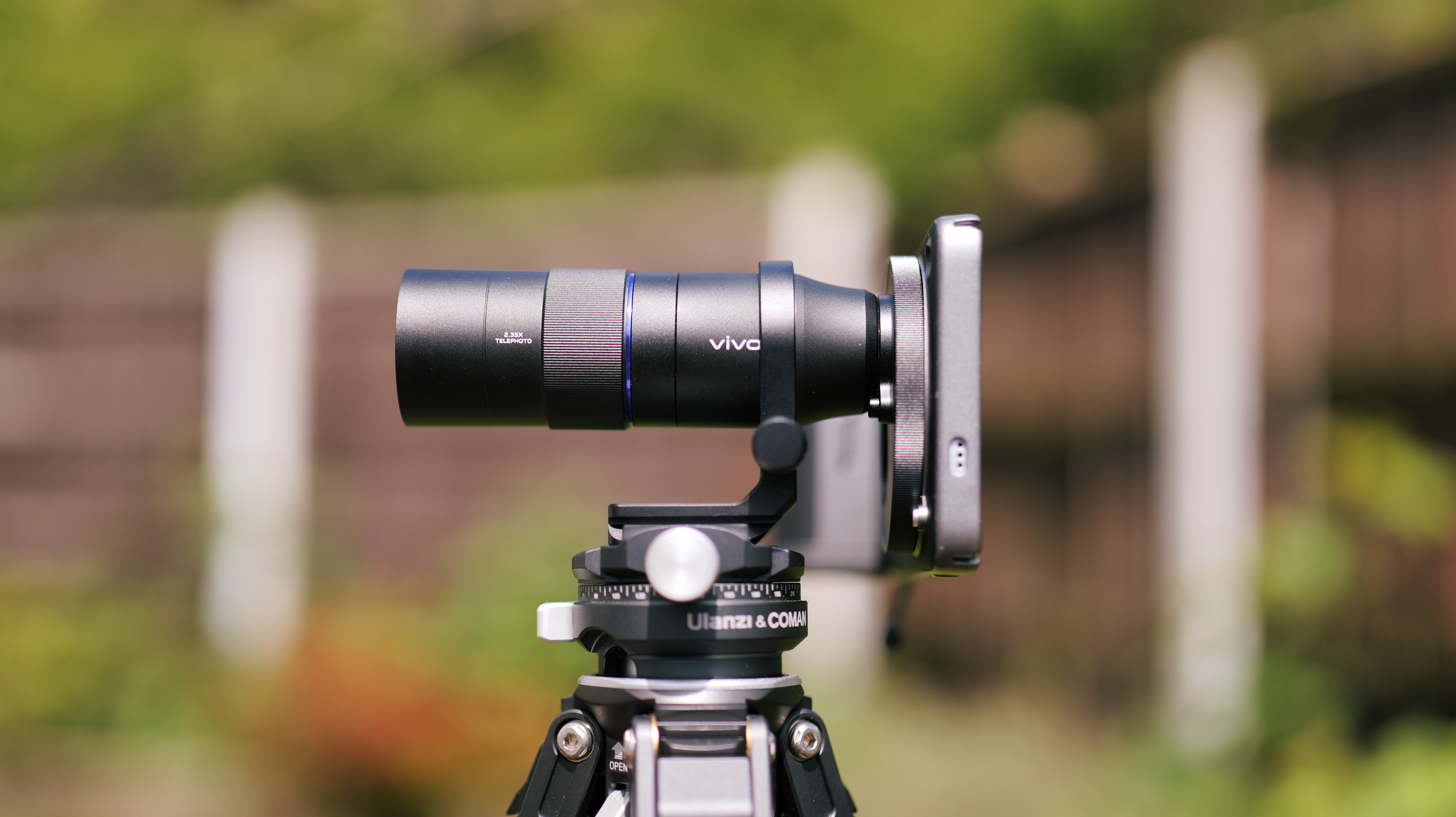
How it works
The lens comes packed with an adapter plate that connects to a bayonet mount on the Photography Kit phone case. Somewhat amusingly, it adds its own (much smaller) bayonet mount for the lens itself. It's a little fiddly to attach, but it definitely beats a screw-on design.
It also comes with a lens collar and an Arca-Swiss compatible baseplate. The lens probably weighs as much as the phone itself, so this makes some sense, but it does feel unusual to have your tripod mount so off-center.
It's certainly a bulky kit, and it looks a little crazy when it's all attached, but with the deep ergonomic grip attached, there's at least some semblance of balance. Using the telephoto adapter without the grip feels extremely strange.
When it's attached, the image is upside-down in the normal camera mode, which makes it almost impossible to frame your shot, and it also looks pretty shaky. However, that's because you need to switch to the Telephoto Extender mode – which flips the image and boosts the stabilization.
I was surprised at how well this mode works. With the teleconverter attached, the 85mm telephoto effectively becomes a 200mm lens. It's not easy to keep that kind of focal length steady, especially as part of a lightweight setup, but the software does some incredible compensation to smooth things out.
The camera app doesn't give you quite as many options in the Telephoto Extender mode, for instance, there's no high-res shooting or snapshot mode, and there's no manual control option, either. I'd love to see some more options added, and I suspect we will as the software matures.
As it stands, the basics are covered well, you can adjust the sharpness, contrast, saturation and brightness in photo mode, and you can capture video at up to 4K 60p.
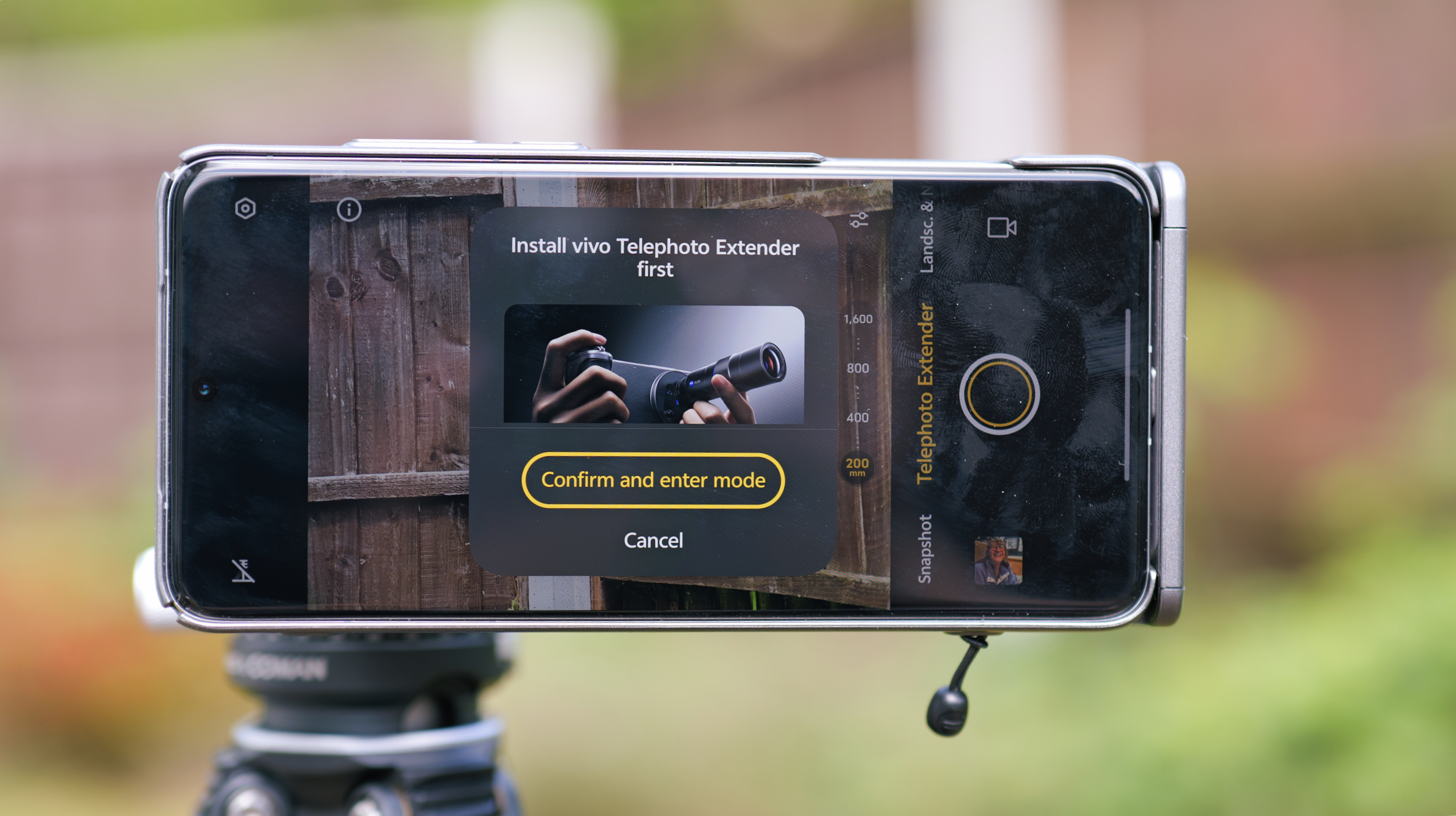
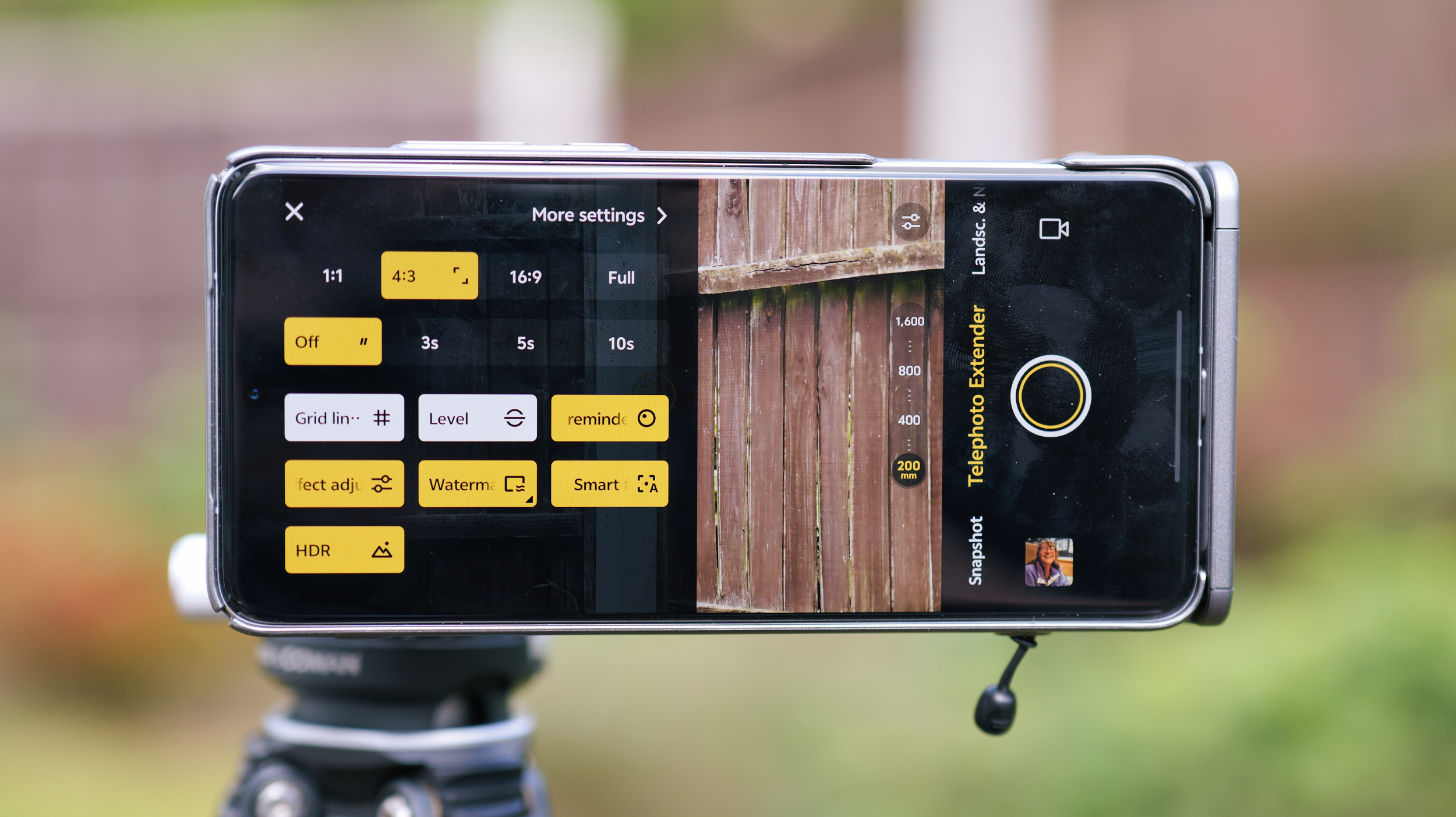
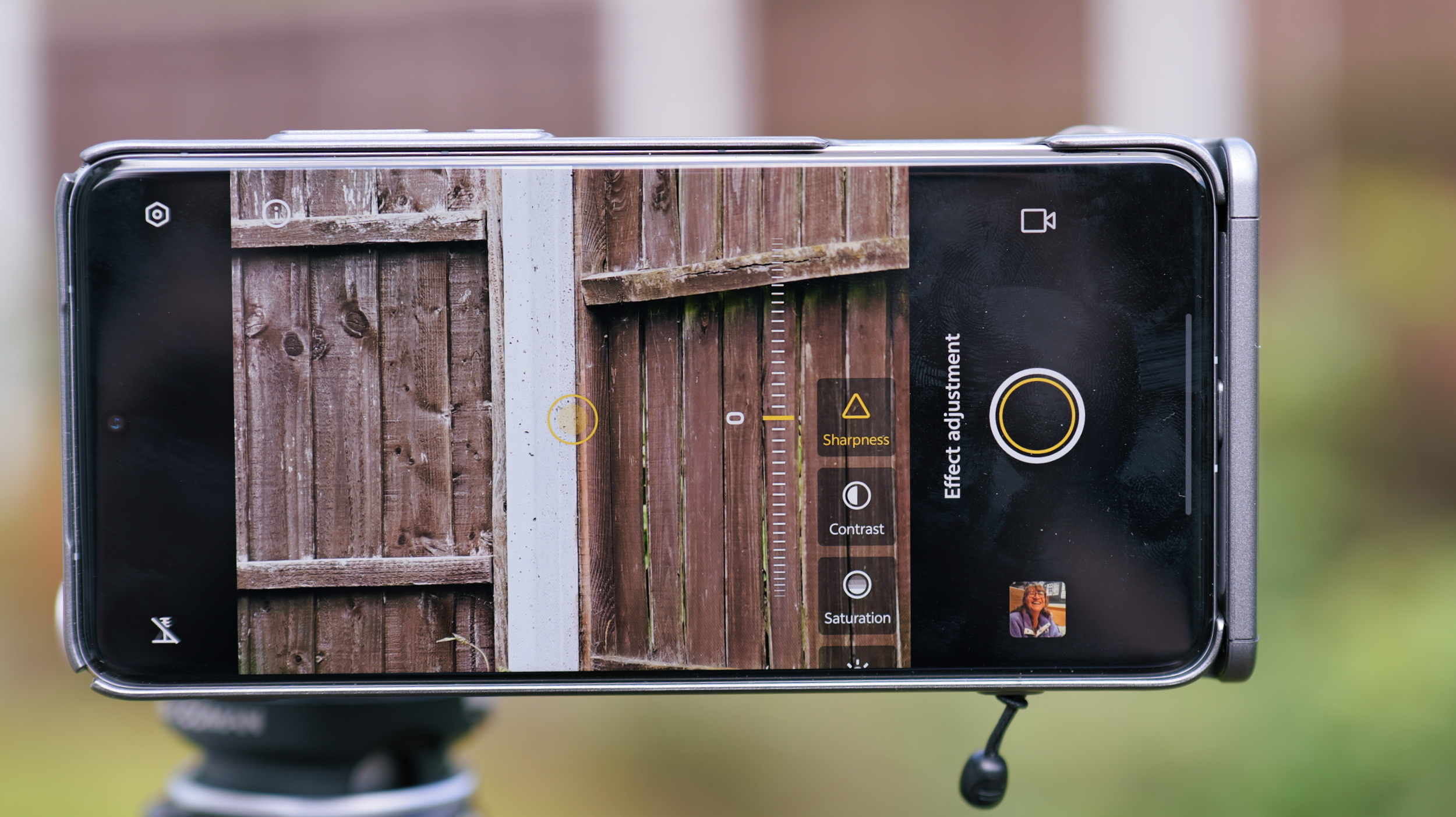
How it performs
So, the big question is, is this adapter actually worth using? For me, the answer is a resounding yes. Shooting at the native 200 mm focal length, I was floored by the sharpness and compression. I've never seen such clarity and depth from a smartphone shot, especially at such a long focal length.
The autofocus is a little slower with it attached, and it definitely hunts a little more, but it's worth persisting because the results can be stunning.
The app gives you buttons to digitally crop to a 400, 800 or 1600mm-equivalent focal length when your subject is further away. Obviously the further you push it, the worse the results will be – but they're far better than zooming that far with the native lens.
I was impressed with the quality at 400 and 800mm, but the AI image processing becomes a little overbearing at 1600mm. In any case, the effect can be dialed back by reducing the sharpness slider in the app.
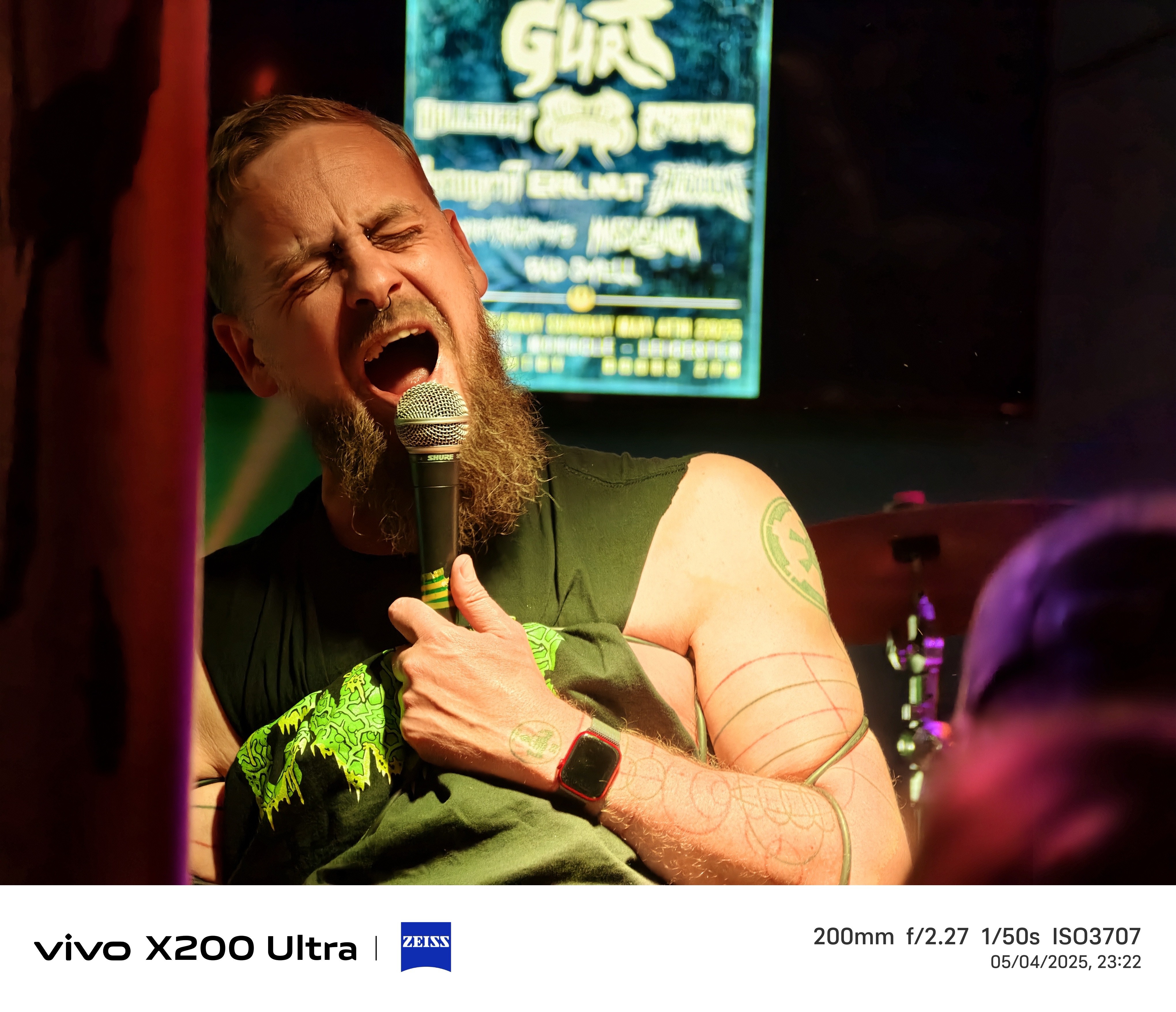
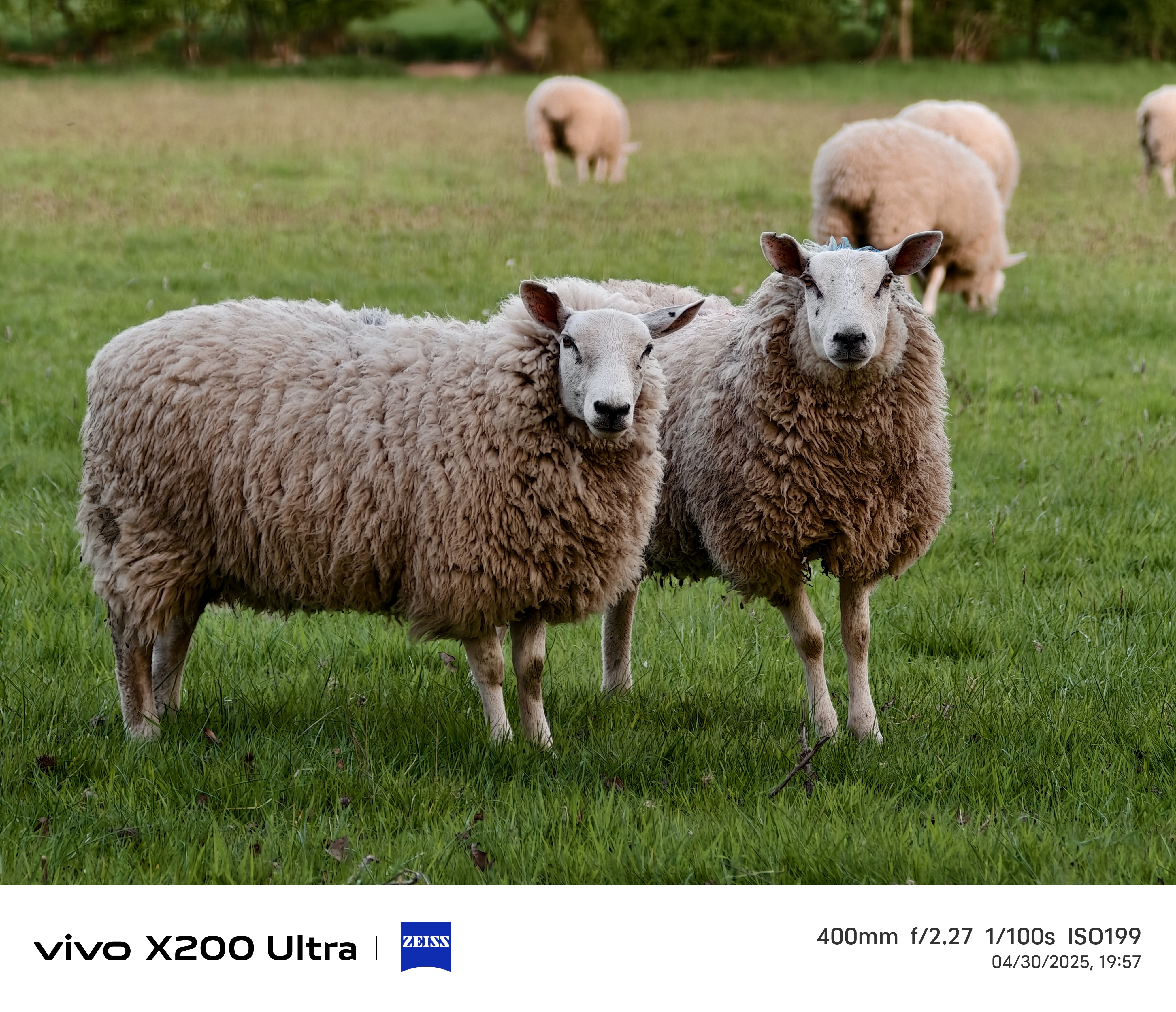
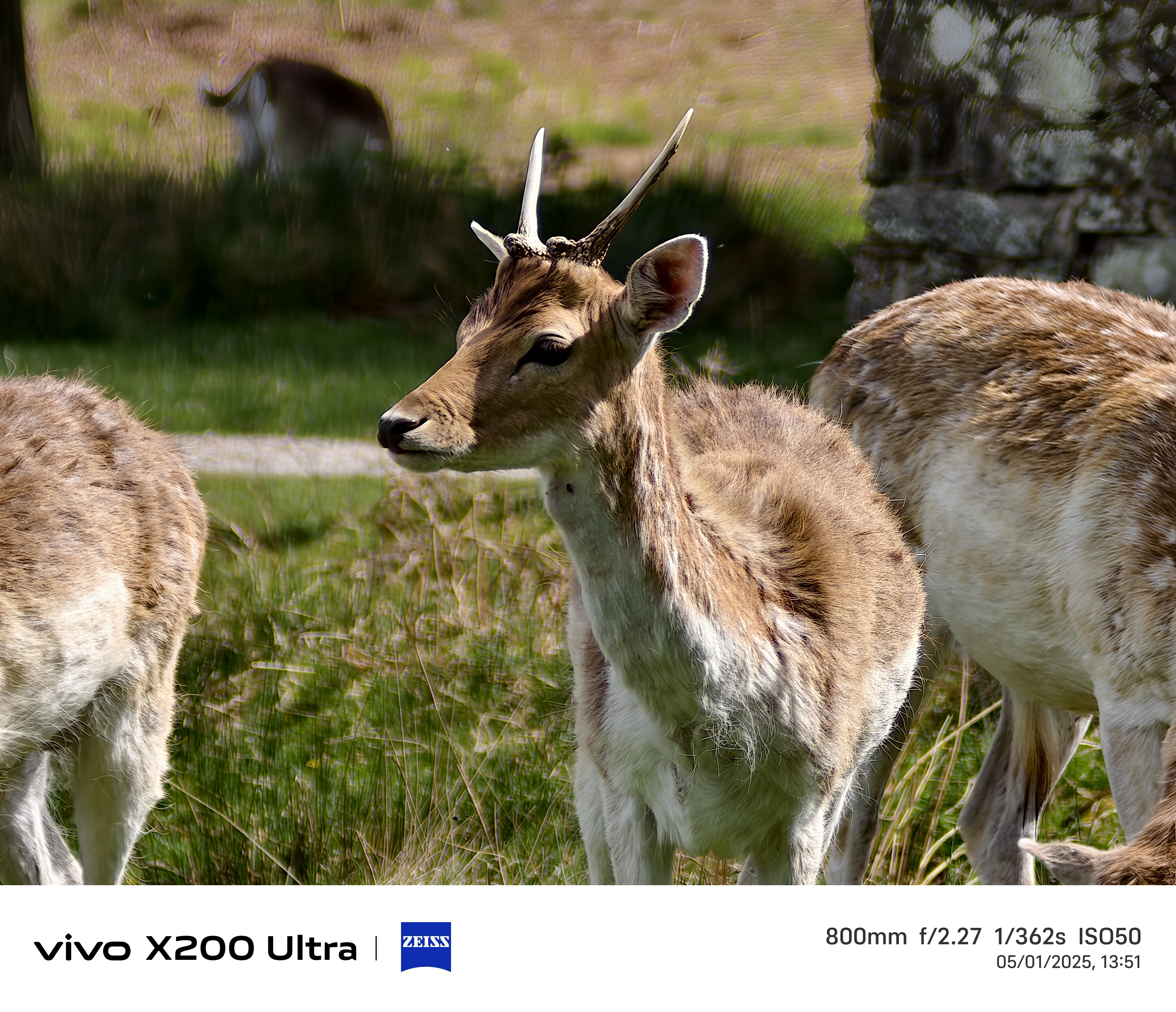
I was very curious to see how the lens would perform at night. The app clearly does some serious electronic stabilization, and I wondered if it could keep up when the light gets low. It turns out, the results are arguably even better.
The reason I say that is because zooming to 200mm at night without the adapter produces very underwhelming results. It's a pretty heavy digital crop, and that creates a lot of noise. Vivo's image processing does an amazing job of removing it, but details are lost in the process.
Comparing 200mm shots with and without the adapter, the difference is night and day. There's so much more detail and, of course, that same wonderful compression to add depth to the shots.
Video results are excellent, too. I was really surprised by how well the stabilization works and, if it's not enough, you can even turn on Ultra Stable mode at the cost of a small crop.
The Achilles heel is, again, the autofocus. It hunts quite a lot, and hopefully that's something that can be improved with newer firmware.
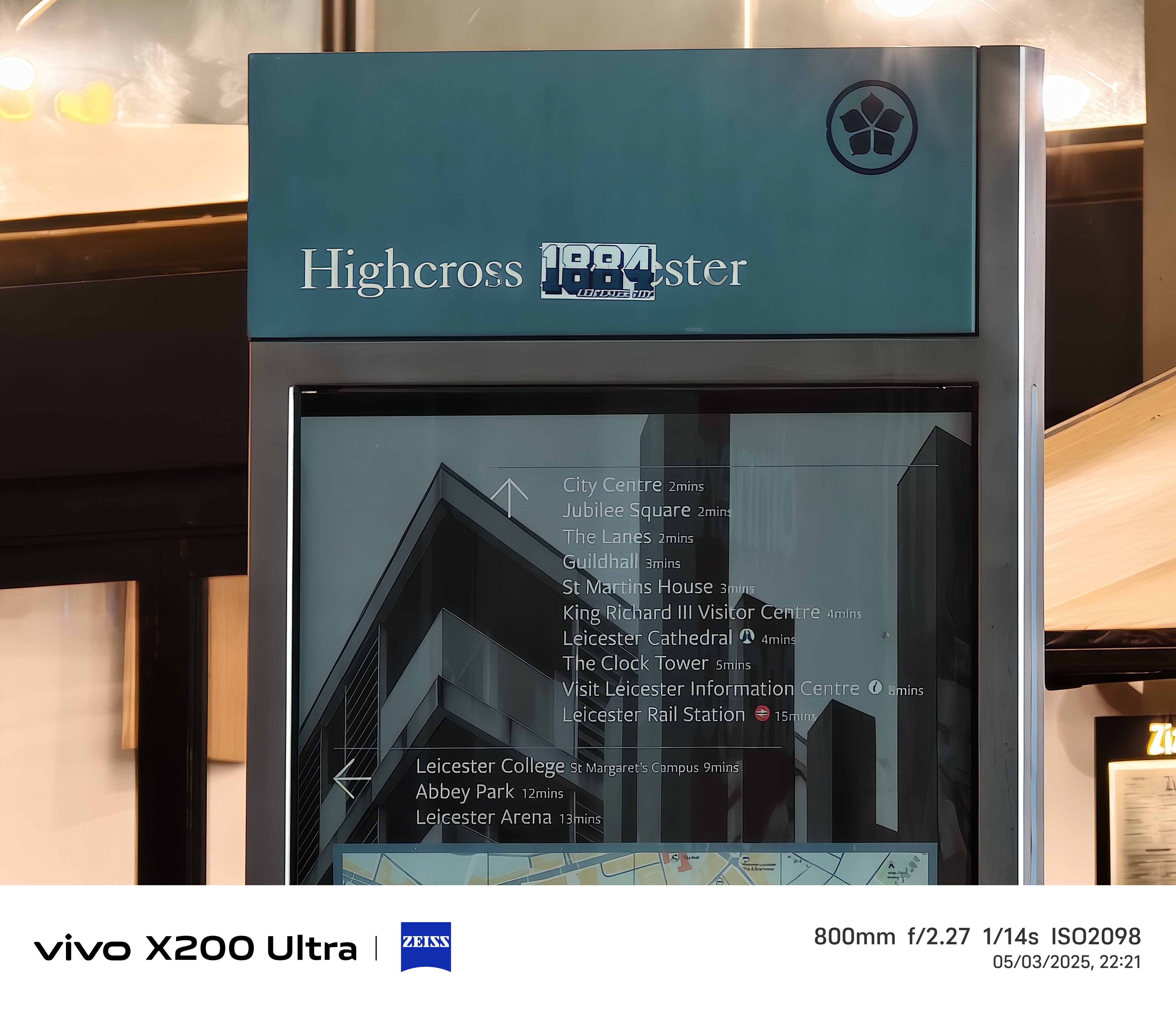
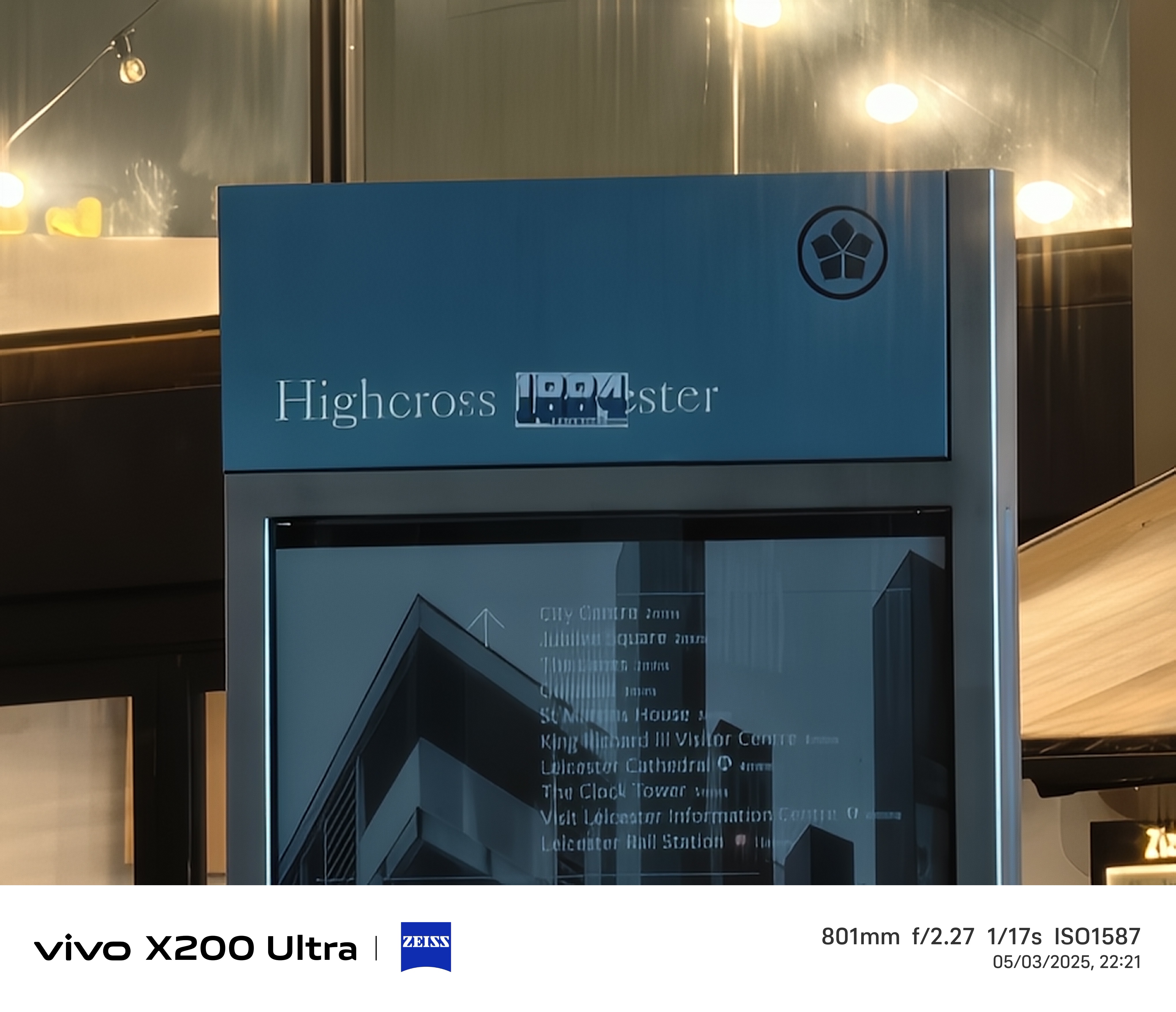
Final thoughts
I truly expected the Vivo X200 Ultra's teleconverter to be something that ended up sitting on my shelf gathering dust, but that's not the case at all. In fact, almost every time I leave it at home, I regret not taking it.
The X200 Ultra already has one of the most versatile smartphone camera systems, and the teleconverter makes it even more so. Sure it's a little annoying to carry, but even compared to compact cameras it's comparatively convenient.
When dismantled, I can fit everything in my pockets – and the whole setup weighs less than most of my full-frame camera lenses. Since I'm already going to be carrying a phone anyway, bringing the adapter along is much easier than carrying a separate camera.
The Vivo X200 Ultra and its Photography Kit are only available to purchase in China, which is a bit of shame – but I think there's a good chance we'll see more solutions like this in the future.
At this year's MWC event, both Xiaomi and Realme showed concept phones with detachable lenses – and after seeing the popularity of Vivo's efforts, I'm sure others will follow suit. After trying it for myself, I'm very excited to see more external optics in the smartphone market.
You might also like...
For more, Android fans should check out more of the best Android phones for photography – and Apple fans can check out the best iPhones for photography.

Luke is a freelance tech journalist who has been working in consumer electronics for over a decade. His specialties include cameras, drones, computing, VR, and smartphones. Previously Features Editor at Pocket-lint, Luke can now be found contributing reviews and features to a variety of tech publications, as well as running a YouTube channel called Neon Airship in his spare time.
You must confirm your public display name before commenting
Please logout and then login again, you will then be prompted to enter your display name.
